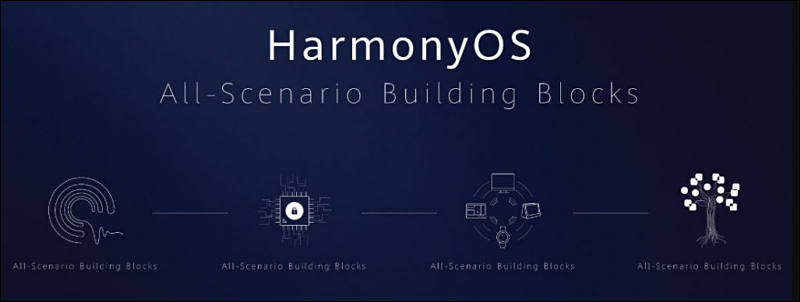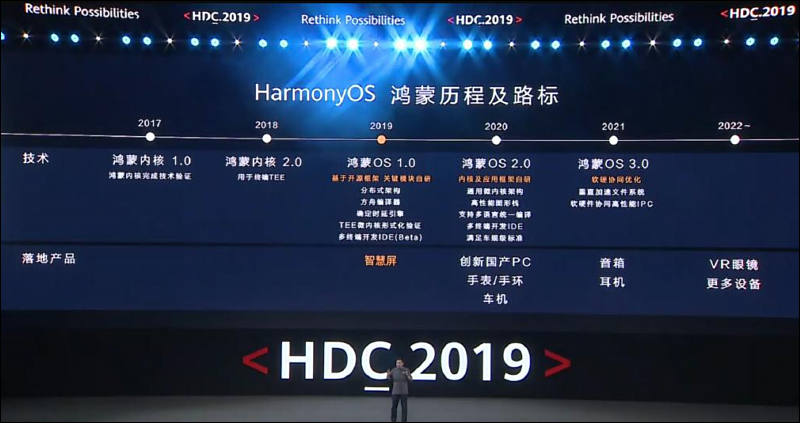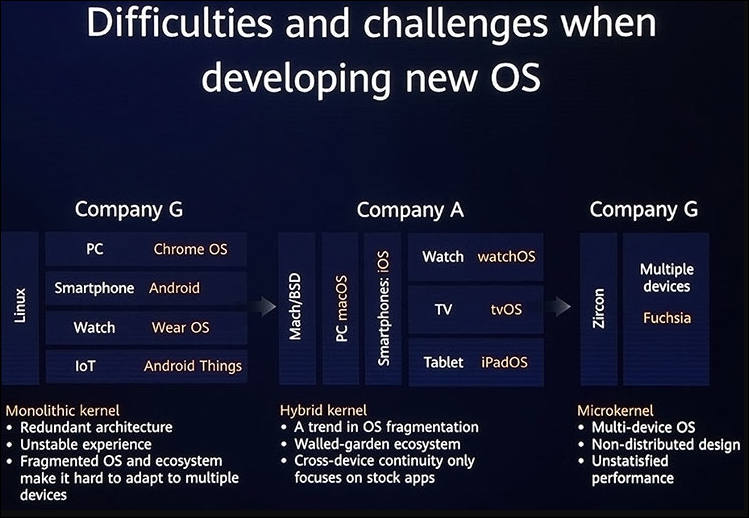
It allows to keep PV going, with more focus towards AI, but keeping be one of the few truly independent places.
-

First, big warning:
The HUAWEI CEO said it will take just a day or two to migrate from Google’s Android to the new HarmonyOS if needed, but it will stick to Google’s platform for now.
Whole presentation had been toned down, and specially focus was away from smartphones.
Seamless: First-ever device OS with distributed architecture, delivering a seamless experience across devices
By adopting distributed architecture and distributed virtual bus technology, HarmonyOS offers a shared communications platform, distributed data management, distributed task scheduling, and virtual peripherals. With HarmonyOS, app developers won’t have to deal with the underlying technology for distributed apps, allowing them to focus on their own individual service logic. Apps built on HarmonyOS can run on different devices while delivering a seamless, collaborative experience across all scenarios.
Smooth: Deterministic Latency Engine and high-performance IPC
HarmonyOS will address underperformance challenges with a Deterministic Latency Engine and high-performance Inter Process Communication (IPC). The Deterministic Latency Engine sets task execution priorities and time limits for scheduling in advance. Resources will gravitate toward tasks with higher priorities, reducing the response latency of apps by 25.7%.
Secure: Microkernel architecture that reshapes security and trustworthiness from the ground up
HarmonyOS uses a brand-new microkernel design that features enhanced security and low latency. This microkernel was designed to simplify kernel functions, implement as many system services as possible in user mode outside the kernel, and add mutual security protection. The microkernel itself provides only the most basic services like thread scheduling and IPC.
Harmony OS’s microkernel design uses formal verification methods to reshape security and trustworthiness from the ground up in a Trusted Execution Environment (TEE).
HarmonyOS is the first OS to use formal verification in device TEE, significantly improving security. In addition, because the HarmonyOS microkernel has much less code (roughly one-thousandth the amount of the Linux kernel), the probability of attack is greatly reduced.
Unified: Multi-device IDE allows apps to be developed once and deployed across multiple devices
Powered by a multi-device IDE, multi-language unified compilation, and a distributed architecture kit, HarmonyOS can automatically adapt to different screen layout controls and interactions, and support both drag-and-drop control and preview-oriented visual programming. This allows developers to more efficiently build apps that run on multiple devices.
The HUAWEI ARK Compiler is the first static compiler that can perform on par with Android’s virtual machine, enabling developers to compile a broad range of advanced languages into machine code in a single, unified environment



 sa9536.jpg800 x 302 - 21K
sa9536.jpg800 x 302 - 21K
 sa9537.jpg800 x 423 - 51K
sa9537.jpg800 x 423 - 51K
 sa9539.jpg749 x 518 - 61K
sa9539.jpg749 x 518 - 61K
Howdy, Stranger!
It looks like you're new here. If you want to get involved, click one of these buttons!
Categories
- Topics List23,993
- Blog5,725
- General and News1,354
- Hacks and Patches1,153
- ↳ Top Settings33
- ↳ Beginners256
- ↳ Archives402
- ↳ Hacks News and Development56
- Cameras2,368
- ↳ Panasonic995
- ↳ Canon118
- ↳ Sony156
- ↳ Nikon96
- ↳ Pentax and Samsung70
- ↳ Olympus and Fujifilm102
- ↳ Compacts and Camcorders300
- ↳ Smartphones for video97
- ↳ Pro Video Cameras191
- ↳ BlackMagic and other raw cameras116
- Skill1,960
- ↳ Business and distribution66
- ↳ Preparation, scripts and legal38
- ↳ Art149
- ↳ Import, Convert, Exporting291
- ↳ Editors191
- ↳ Effects and stunts115
- ↳ Color grading197
- ↳ Sound and Music280
- ↳ Lighting96
- ↳ Software and storage tips266
- Gear5,420
- ↳ Filters, Adapters, Matte boxes344
- ↳ Lenses1,582
- ↳ Follow focus and gears93
- ↳ Sound499
- ↳ Lighting gear314
- ↳ Camera movement230
- ↳ Gimbals and copters302
- ↳ Rigs and related stuff273
- ↳ Power solutions83
- ↳ Monitors and viewfinders340
- ↳ Tripods and fluid heads139
- ↳ Storage286
- ↳ Computers and studio gear560
- ↳ VR and 3D248
- Showcase1,859
- Marketplace2,834
- Offtopic1,320




